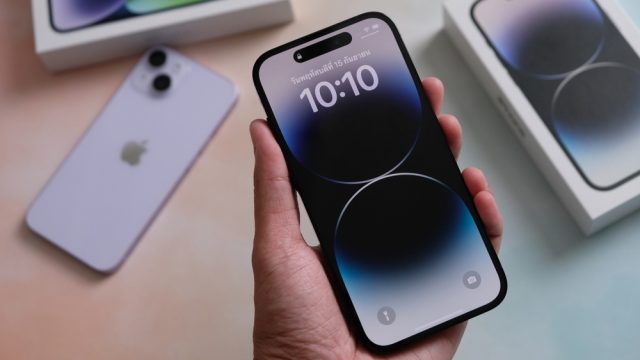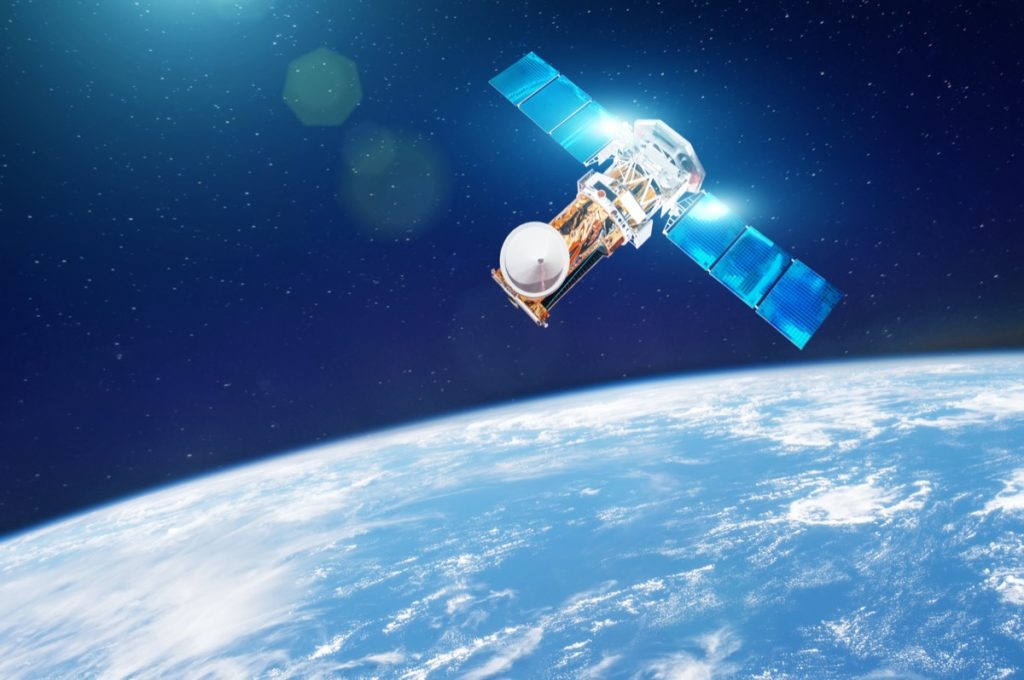Apple Just Launched This Life-Saving New Feature for iPhone Users
The new safety technology just went live for certain models of the device.

Few devices released in recent history have had as much of an impact on daily life as the iPhone. And even though there have been constant improvements made to it since the first version that introduced it to the public nearly 15 years ago, each year's new model adds even more functionality. Today, you can book airfare, order lunch, pay for groceries, catch a ride across town, and video conference all from the single smartphone that fits into your pocket. And now, Apple has announced that it just launched a potentially life-saving new feature for iPhone users. Read on to see how your device could help you during the direst emergencies.
READ THIS NEXT: Never Charge Your Android Phone This Way, Experts Say.
The latest iPhone added several new popular features when it was released earlier this year.

Public adoration for the iPhone runs so deep that Apple's annual press conference outlining the latest model's newest features has become a serious spectacle for the tech world and gadget fans. This year was no exception with the launch of the iPhone 14 in September, which saw a few refinements and many new features added to the devices.
As usual, the latest Apple smartphone got a significant upgrade to its camera, allowing for better photo and video recording quality in low light and during high-speed motion, as well as an enhanced zoom, Business Insider reported. The update also changed its look, ditching the permanent dark "notch" that took up screen space in favor of a moving display dubbed the "Dynamic Island" that's used for less distracting notifications. And the screen in the latest devices also got upgraded to an "always-on" mode, allowing users to see the time and notifications without having to press any buttons on their lock screen.
But even though the latest changes were meant to make peoples' daily lives easier, Apple also touted other new features that it actually hoped its owners would never have to use. This includes the iPhone 14's new crash-detection technology, which can sense if someone has been in a driving accident and automatically call for help from emergency services if you're unresponsive. And now, the company is releasing another vital safety function for the devices.
Apple just launched a new potentially life-saving feature for some iPhone users.

It can be easy to become a little too dependent on your smartphone to complete tasks, making a drop in coverage a potentially agonizing scenario. However, it's an entirely different situation to find yourself needing help in an emergency without any way to call for it.
Fortunately, Apple's latest technological advancement might help avoid such a nightmare scenario. On Nov. 15, the company announced that it had activated its emergency SOS via satellite feature for the iPhone. The newest addition will allow users to get out a distress call from remote areas even if they're outside of network coverage areas thanks to a satellite connection.
"Some of the most popular places to travel are off the beaten path and simply lack cellular coverage," Greg Joswiak, Apple's senior vice president of worldwide marketing, said in a press release. "With Emergency SOS via satellite, the iPhone 14 lineup provides an indispensable tool that can get users the help they need while they are off the grid," he added. The company also points out that the update could help those affected by natural disasters that take down local network coverage.
RELATED: For more up-to-date information, sign up for our daily newsletter.
Here's how the latest iPhone safety advancement works.

The smartphone in your pocket relies on land-based cellular networks to send and receive calls, messages, and notifications throughout the day. But if you ever dial 911 and can't get service, the latest technology will allow you to send an "emergency text via satellite" to reach out for help.
Users will then receive a short questionnaire to describe their emergency, asking to explain the situation from a list of options including "car or vehicle issue," "sickness or injury," "crime," "lost or trapped," and more, CNBC reports. From there, users can then choose to notify their preset emergency contacts that they've called for help. They can also use the device's Find My app to share their location with contacts.
From there, things get a little more hands-on. Users will have to point their phones skywards physically so they can connect to satellites orbiting above. Establishing a link can take up to 15 seconds with a clear view, but it can take up to a minute to send messages through if you're under trees or other obstructions, CNBC reports. Staying connected will also require you to move your phone during the conversation to stay in line with the satellite while it moves in orbit. Once your initial messages send, operators will immediately have access to your location and will reply with more questions so responders can find you more quickly.
Anyone curious about the experience can even go through a dry run by clicking on Settings on their phone, tapping Emergency SOS, and then clicking Try Demo. This will allow users to get comfortable with the program without accidentally alerting any emergency personnel.
The brand-new features are limited to certain types of iPhones in specific areas.

However, not all iPhone users can access the latest safety features. The company points out that only models in the iPhone 14 lineup—including the iPhone 14, iPhone 14 Plus, iPhone 14 Pro, and iPhone 14 Pro Max—running iOS 16.1 can connect to satellites. The service is also geographically limited to the U.S. and Canada for now, with plans for it to roll out in France, Germany, Ireland, and the U.K. in December.
Apple also specifies that the service will be provided for free for two years after the activation of any new enabled models for now but fails to mention how much it might cost after the initial trial period. However, it's possible that the company could be planning to offer subscription services for satellite-enabled connection in the future, The Wall Street Journal reports.





















